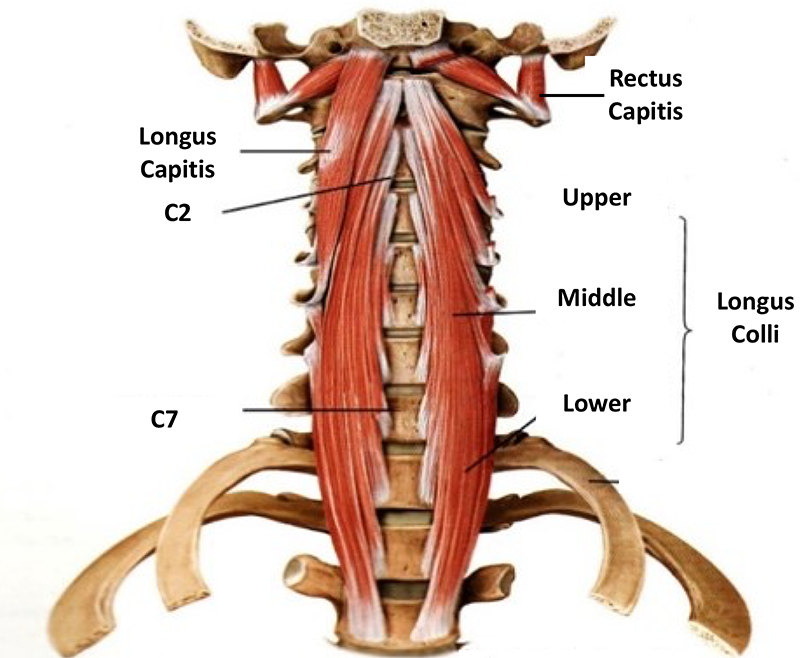Deep Neck Flexor Weakness: An Overlooked Cause of Neck Problems
In the age of screens and modern living, poor posture and neck pain have become common concerns. While chiropractors often emphasize the structural aspects of neck pain, studies reveal that approximately 80% of neck stability stems from cervical muscles.
Deep neck flexor weakness, in particular, plays a profound role in neck pain and headaches. To get a proper assessment and develop the right treatment plans to address deep cervical flexor issues, it is important to understand the significance of these muscles.
Deep neck flexors, where are they and what do they do?
The deep neck flexors consist of four muscles located on the front of the cervical spine, situated behind the trachea. This group comprises the longus colli, longus capitis, rectus capitis, and the longus cervicis. These muscles are critical in stabilizing the cervical spine due to their proximity to the spine and their relatively short length.
Assessment: Cervical Deep Neck Flexor Endurance Test
To assess deep neck flexor strength, the Deep Neck Flexor Endurance Test is often used. The test involves the patient lying down, retracting their chin, and lifting their head slightly off the table. The patient's head position is monitored, and the test ends when the head touches the chiropractor’s hand.
Norms for the test are around 40 seconds for men and 30 seconds for women, with neck pain sufferers averaging approximately 20 seconds.
Low endurance indicates deep neck flexor weakness and an increased reliance on other neck muscles, leading to poor posture and pain.
Treatment: Deep Neck Flexor Exercises
Strengthening the deep neck flexors can improve neck posture, reduce pain, and enhance function. The Deep Neck Flexor Strengthening Exercise mirrors the assessment.
While lying down, the patient retracts their chin, lifts their head, and holds the position for 3-4 seconds. For better outcomes, patients are advised to repeat this exercise for three sets of ten repetitions daily.
Outcomes
Exercise & Manual Therapy
Recent studies confirm that deep neck flexor exercises can improve posture, reduce pain, and decrease disability. Some studies also indicate that deep cervical flexor endurance training is more effective than conventional manual therapy (PT) for neck pain and headaches.
Exercise & Manipulation
A recent trial involving chronic neck pain patients compared deep neck flexor strengthening to manual therapy (manipulation and mobilization) and found that manipulation provides faster pain relief when used alone. However, exercises targeting deep neck flexor muscles improve function more quickly.
In conclusion, managing neck problems requires a comprehensive approach that may involve manipulation and chiropractic exercises. Deep neck flexor strength is a key factor to consider, as addressing this weakness can lead to better neck health and reduced pain.



